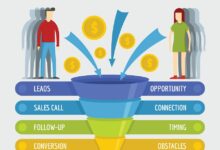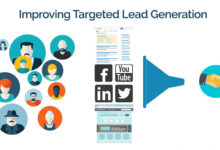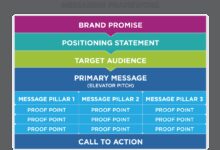Leads: 7 Powerful Strategies to Generate High-Quality Leads Fast
Want to grow your business fast? It all starts with one thing: leads. Without a steady stream of quality leads, even the best products can go unnoticed. In this deep dive, we’ll uncover the secrets to generating, nurturing, and converting leads like a pro.
What Are Leads and Why They Matter

At the heart of every successful business lies a powerful engine: lead generation. But what exactly are leads? In simple terms, a lead is any person or organization that shows interest in your product or service. This interest could come from filling out a form, subscribing to a newsletter, downloading a guide, or even engaging with your content on social media.
The Definition of a Lead
A lead is more than just a name and email address. It’s a potential customer who has taken a step toward learning more about what you offer. According to Investopedia, a lead is “a potential sales contact”—someone who may convert into a paying customer given the right nurturing.
- Leads can be individuals or businesses.
- They express interest through actions like form submissions or content downloads.
- Not all leads are equal—some are warmer than others.
Types of Leads: MQLs, SQLs, and More
Not all leads are ready to buy. That’s why marketers categorize them based on readiness and engagement level. The most common classifications include:
Marketing Qualified Lead (MQL): A lead deemed more likely to become a customer based on engagement with marketing efforts (e.g., downloading a whitepaper).Sales Qualified Lead (SQL): An MQL that sales teams have validated as ready for direct outreach.Product Qualified Lead (PQL): Common in SaaS, this lead has used a product (e.g., free trial) and shown intent to upgrade.Information Qualified Lead (IQL): Someone who has requested specific information but hasn’t engaged deeply yet..
“A lead is not just a data point—it’s a human being with a problem you can solve.” — HubSpot
Why Leads Are the Lifeblood of Business Growth
Leads fuel every stage of the sales funnel.Without them, there’s no opportunity to convert, upsell, or build long-term customer relationships.Think of leads as the raw material of revenue.The more high-quality leads you generate, the greater your chances of closing deals and scaling profitably..
For startups and enterprises alike, consistent lead generation ensures sustainability. It reduces dependency on one-off sales and creates predictable revenue streams. Plus, in competitive markets, the company with the best lead engine often wins.
How to Generate Leads: Proven Methods That Work
Generating leads isn’t about luck—it’s about strategy. The most successful companies use a mix of inbound and outbound tactics tailored to their audience. Let’s explore the most effective methods for attracting quality leads.
Inbound Lead Generation: Attracting Leads Naturally
Inbound marketing focuses on drawing prospects in through valuable content and experiences. Instead of chasing customers, you create an environment where they come to you. This method builds trust and positions your brand as an authority.
- Content Marketing: Publish blogs, videos, and guides that answer real customer questions. For example, a blog titled “10 Common SEO Mistakes and How to Fix Them” can attract marketers looking for solutions.
- Search Engine Optimization (SEO): Optimize your website so it ranks higher on Google. Higher visibility = more organic traffic = more leads. Tools like Ahrefs help identify keywords your audience is searching for.
- Lead Magnets: Offer free resources (e.g., templates, checklists, ebooks) in exchange for contact information. A well-designed lead magnet can convert 20–30% of visitors into leads.
Outbound Lead Generation: Reaching Out Directly
Outbound strategies involve initiating contact with potential customers. While often seen as more aggressive, they can be highly effective when done right.
- Cold Email Campaigns: Personalized emails sent to prospects who haven’t interacted with your brand. Tools like HubSpot Sales Hub help track opens and replies.
- LinkedIn Outreach: Sales reps use LinkedIn to connect with decision-makers. A personalized connection request followed by a value-driven message can spark conversations.
- Telemarketing: Though traditional, cold calling still works in B2B sectors like SaaS and finance, especially when targeting niche markets.
Social Media and Paid Ads: Accelerating Lead Flow
Social platforms and paid advertising offer scalable ways to generate leads quickly.
- Facebook & Instagram Lead Ads: Users can submit forms without leaving the app. These are ideal for e-commerce and local services.
- LinkedIn Lead Gen Forms: Pre-filled forms for B2B campaigns, reducing friction and boosting conversion rates.
- Google Ads (Search & Display): Target users actively searching for solutions. Use compelling ad copy and strong CTAs to drive clicks and conversions.
Top Tools to Capture and Manage Leads
Even the best lead generation strategies fail without the right tools. From landing pages to CRM systems, technology plays a crucial role in capturing, organizing, and nurturing leads.
Landing Page Builders: Turning Visitors into Leads
A landing page is a dedicated web page designed to convert visitors into leads. Unlike regular website pages, landing pages have one goal: get the user to take action (e.g., sign up).
- Unbounce: Drag-and-drop builder with A/B testing features. Great for marketers without coding skills.
- Leadpages: Offers templates optimized for high conversion rates.
- Carrd: Simple, affordable option for solo entrepreneurs and small businesses.
CRM Systems: Organizing Your Leads
A Customer Relationship Management (CRM) system is essential for tracking every interaction with your leads. It helps sales teams stay organized and ensures no opportunity slips through the cracks.
- HubSpot CRM: Free, user-friendly, and packed with features like email tracking and deal pipelines.
- Salesforce: Industry leader with advanced automation and analytics.
- Zoho CRM: Affordable alternative with strong customization options.
“If you can’t measure it, you can’t manage it.” — Peter Drucker
Email Marketing Platforms: Nurturing Leads Automatically
Most leads don’t convert immediately. Email marketing platforms allow you to send automated sequences that educate, engage, and guide leads toward a purchase.
- Mailchimp: Ideal for beginners, with drag-and-drop editors and basic automation.
- Klaviyo: Best for e-commerce, offering deep integration with Shopify and WooCommerce.
- ActiveCampaign: Advanced automation and segmentation for sophisticated lead nurturing.
Qualifying Leads: How to Spot the Best Opportunities
Not all leads are worth pursuing. Some are just browsing. Others are ready to buy. The key is qualification—separating the tire-kickers from the true buyers.
BANT Framework: Budget, Authority, Need, Timing
BANT is a classic sales qualification model developed by IBM. It helps sales teams assess whether a lead is ready to move forward.
- Budget: Does the lead have the financial resources to purchase?
- Authority: Is the person you’re talking to a decision-maker?
- Need: Do they have a problem your product solves?
- Timing: Are they looking to buy soon?
If a lead checks all four boxes, they’re likely an SQL and ready for a sales call.
FAT PIPE Framework: A Modern Alternative
As buying behaviors evolve, newer frameworks like FAT PIPE offer a more nuanced approach.
- Fit: Does your solution align with their business model?
- Authority: Who influences the decision?
- Timing: What’s driving their urgency?
- Pain: What problem are they trying to solve?
- Influence: Who else is involved in the buying process?
- Priority: How important is this initiative?
- Economic Buyer: Who controls the budget?
FAT PIPE is especially useful in complex B2B sales cycles with multiple stakeholders.
Lead Scoring: Automating the Qualification Process
Lead scoring assigns numerical values to leads based on their behavior and profile. High scores indicate readiness to buy.
- Positive points for actions like visiting pricing pages, attending webinars, or downloading case studies.
- Negative points for inactivity or unqualified job titles.
- Automated in CRMs like HubSpot and Salesforce using rules-based systems.
This allows marketing and sales teams to prioritize efforts and focus on the hottest leads.
Nurturing Leads: Turning Interest into Sales
According to Marketing Donut, only 25% of leads are ready to buy at any given time. The rest need nurturing. This is where lead nurturing comes in—building relationships over time until the lead is ready to convert.
Email Drip Campaigns: The Power of Consistency
Email drip campaigns are automated sequences sent over days or weeks. They deliver value, build trust, and gently guide leads toward a decision.
- Day 1: Welcome email with a thank-you and a helpful resource.
- Day 3: Share a customer success story.
- Day 7: Offer a free consultation or demo.
- Day 14: Send a limited-time offer to create urgency.
Tools like ActiveCampaign make it easy to set up these workflows.
Content Personalization: Speaking Directly to the Lead
Generic messages get ignored. Personalized content, on the other hand, grabs attention. Use data like job title, industry, or past behavior to tailor your messaging.
- Dynamic website content that changes based on visitor profile.
- Personalized subject lines (e.g., “John, here’s how we helped companies like yours save 30% on marketing”).
- Behavior-triggered emails (e.g., if a lead downloads a pricing guide, follow up with a case study).
Retargeting Ads: Staying Top of Mind
Most leads won’t convert on their first visit. Retargeting ads remind them of your brand as they browse other sites.
- Use Facebook Pixel or Google Ads Remarketing to track visitors.
- Show ads highlighting benefits, testimonials, or special offers.
- Exclude converted leads to avoid annoyance.
Retargeting can increase conversion rates by up to 150%, according to WordStream.
Converting Leads: Closing the Deal Effectively
After generating and nurturing leads, the final step is conversion. This is where sales teams take over, using proven techniques to turn interest into revenue.
The Role of Sales Teams in Lead Conversion
Sales reps are the bridge between marketing and revenue. Their job is to engage qualified leads, understand their needs, and present a compelling solution.
- Use discovery calls to ask open-ended questions.
- Listen more than you talk—80% of the conversation should come from the lead.
- Focus on value, not features. Explain how your product solves their specific problem.
Effective Sales Techniques for High Conversion
Not all sales approaches are equal. The most effective techniques are consultative and customer-centric.
- SPIN Selling: Focuses on Situation, Problem, Implication, and Need-payoff questions to uncover deep pain points.
- Challenger Sale: Teach the customer something new and challenge their assumptions to create value.
- Value Selling: Emphasize ROI and long-term benefits over price.
Follow-Up Strategies That Work
Many deals are lost not because of the product, but because of poor follow-up. A study by Salesforce found that 80% of sales require five follow-ups, yet 44% of reps give up after one.
- Follow up within 5 minutes of lead submission for maximum impact.
- Use multiple channels: email, phone, LinkedIn.
- Provide new value in each follow-up (e.g., a case study, testimonial, or tip).
Measuring Lead Success: Key Metrics to Track
You can’t improve what you don’t measure. Tracking the right metrics helps you understand what’s working and where to optimize.
Lead Conversion Rate
This measures the percentage of leads that become customers. Formula: (Number of Customers / Number of Leads) x 100.
- Average conversion rate across industries is around 10–15%.
- Low rates may indicate poor lead quality or weak follow-up.
Cost Per Lead (CPL)
How much you spend to acquire one lead. Formula: Total Campaign Spend / Number of Leads.
- Lower CPL means better efficiency.
- Compare CPL across channels to allocate budget wisely.
Lead-to-Customer Timeline
The average time it takes for a lead to become a paying customer. This varies by industry:
- E-commerce: Hours to days.
- SaaS: Weeks to months.
- Enterprise Sales: 6+ months.
Shortening this timeline can accelerate revenue growth.
Customer Acquisition Cost (CAC)
CAC includes all costs (marketing, sales, tools) to acquire a customer. Formula: Total Acquisition Cost / Number of Customers.
- Compare CAC to Customer Lifetime Value (LTV). A healthy LTV:CAC ratio is 3:1.
- High CAC may signal inefficiencies in lead generation or sales process.
Common Mistakes in Lead Generation (And How to Avoid Them)
Even experienced marketers make mistakes. Here are the most common pitfalls and how to fix them.
Targeting the Wrong Audience
Generating leads is pointless if they’re not your ideal customers. Creating a detailed buyer persona helps avoid this.
- Conduct customer interviews to understand pain points.
- Analyze existing customer data to find patterns.
- Use tools like Ideal Persona to build accurate profiles.
Ignoring Lead Nurturing
Many companies focus only on acquisition and forget about nurturing. This leads to wasted opportunities.
- Set up automated email sequences.
- Use retargeting ads to stay visible.
- Offer ongoing value through webinars and content.
Poor Follow-Up and Communication
Slow or generic follow-ups kill momentum. Speed and personalization are key.
- Respond to leads within 5 minutes.
- Use CRM alerts to avoid missed opportunities.
- Train sales teams on active listening and consultative selling.
What is a lead in marketing?
A lead in marketing is a person or organization that has shown interest in your product or service, typically by providing contact information in exchange for value, such as a free guide or consultation.
How do you generate high-quality leads?
Generate high-quality leads by targeting the right audience with valuable content, using lead magnets, optimizing landing pages, and leveraging both inbound (SEO, content) and outbound (email, ads) strategies.
What’s the difference between MQL and SQL?
A Marketing Qualified Lead (MQL) has engaged with marketing content and shows potential. A Sales Qualified Lead (SQL) has been vetted by the sales team and is ready for direct outreach.
How can I improve my lead conversion rate?
Improve conversion rates by qualifying leads better, personalizing communication, following up quickly, and using proven sales techniques like SPIN or Challenger Selling.
What tools are best for managing leads?
Top tools include HubSpot CRM (free), Salesforce (enterprise), ActiveCampaign (automation), and Unbounce (landing pages). Choose based on your budget and needs.
Leads are the foundation of every successful business. From understanding what a lead is to generating, qualifying, nurturing, and converting them, each step plays a critical role in driving growth. By using the right strategies, tools, and metrics, you can build a predictable lead engine that fuels long-term success. Don’t just chase leads—build relationships, deliver value, and watch your conversions soar.
Further Reading:



